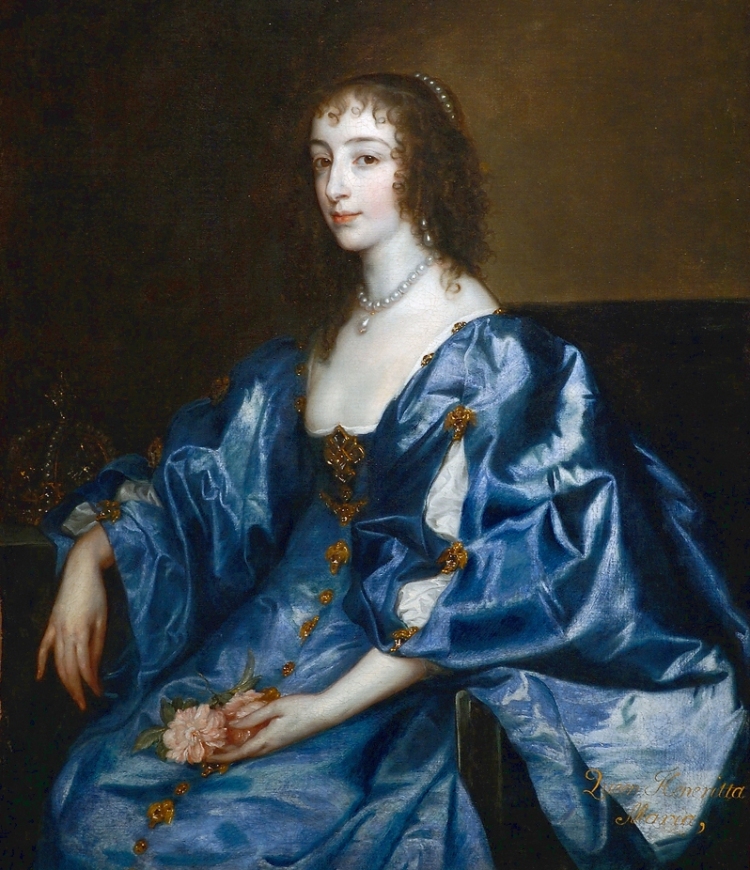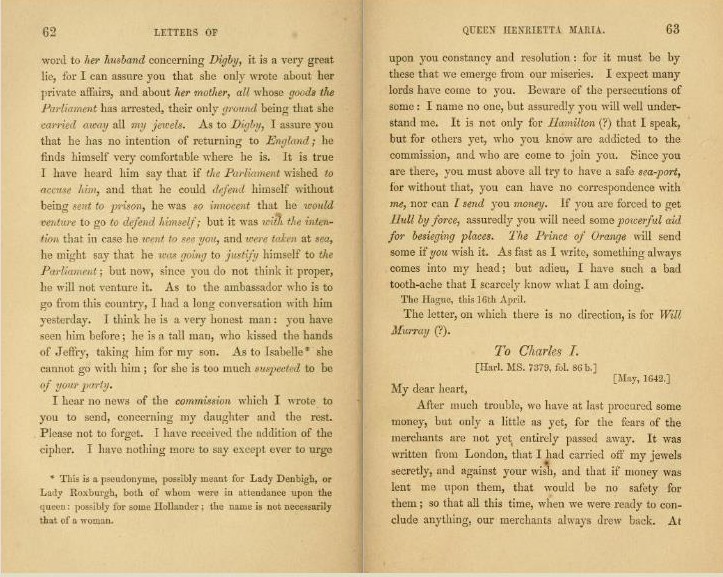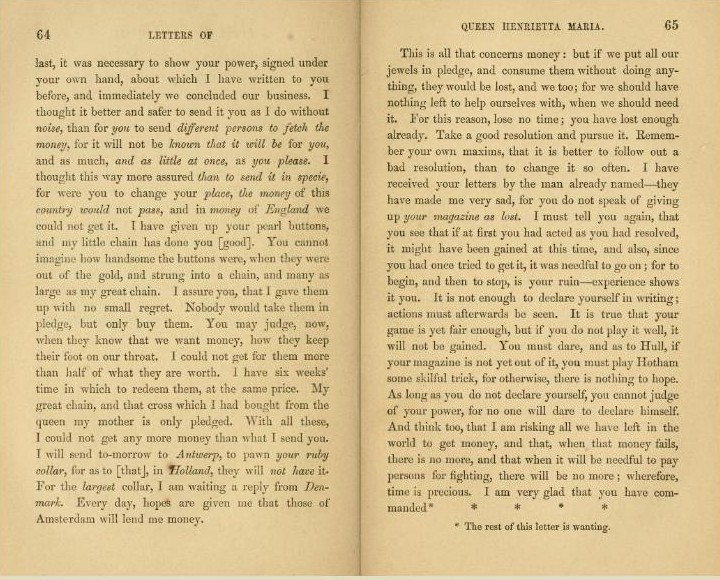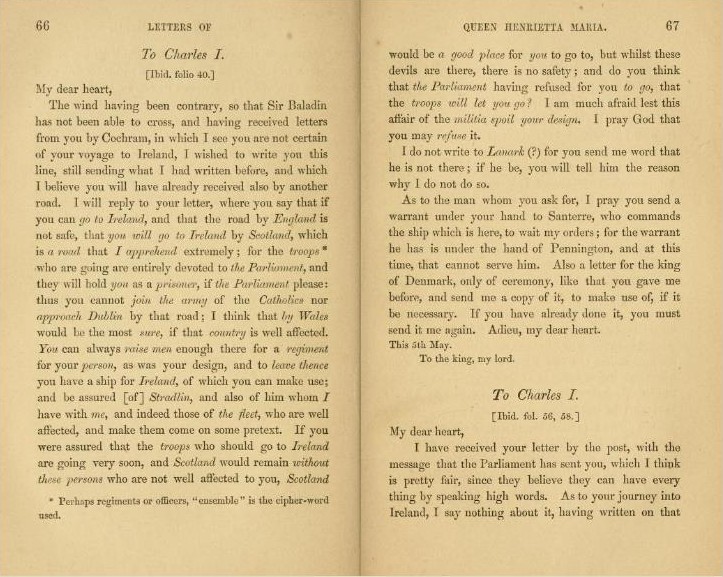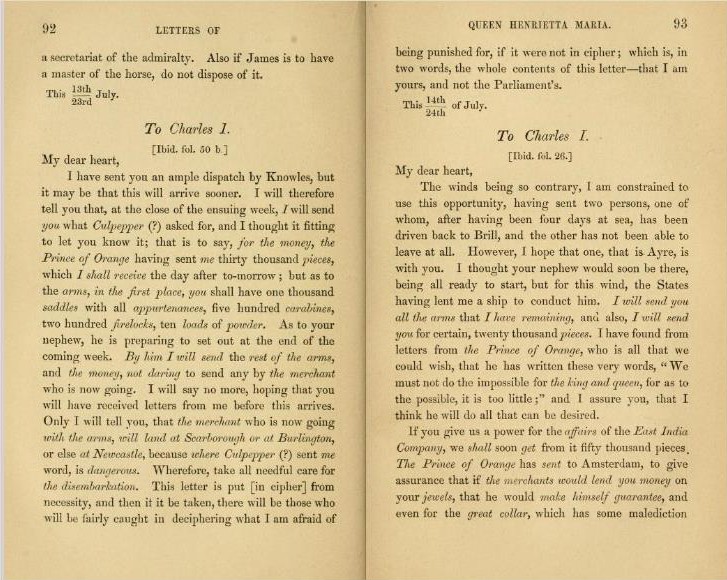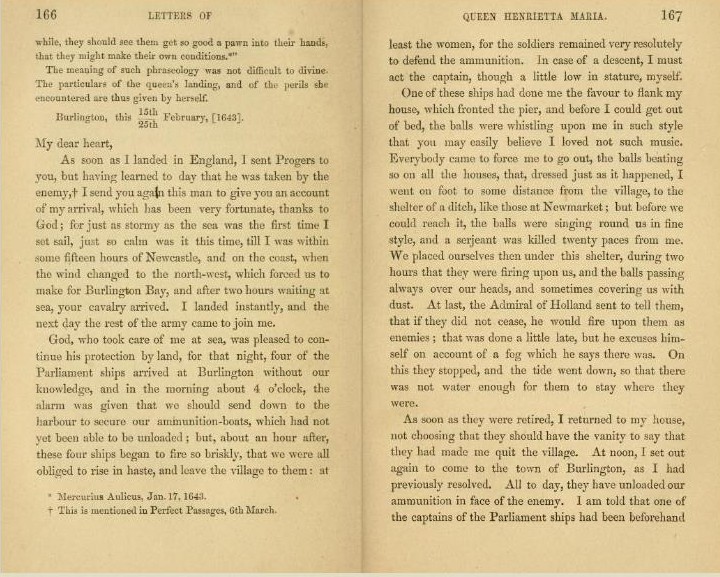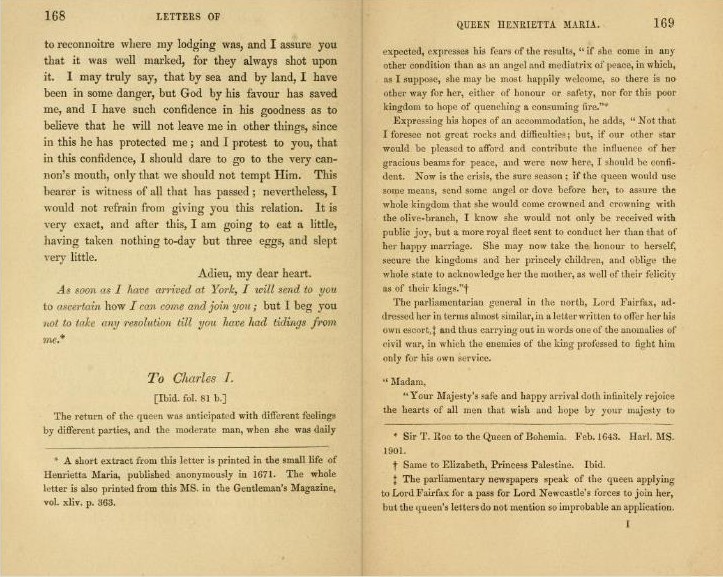Much has been written about the English Civil Wars, with many author’s being contemporary to the conflict, however some of these author’s I believe deserve more recognition as they provide unique insights into a horrific conflict through which they survived to ‘tell the tale’. Henrietta Maria can be considered a less well known Queen of England, this in all probability a consequence of the Civil Wars, the execution of her husband Charles 1 and her subsequent exile to France. Henrietta’s strong views on religion and the absolute power of the king, who is anointed by God, meant that by 1642 she was an extremely unpopular monarch, not only because she was foreign and therefore distrusted, but because she had the ear of the king and was thus perfectly placed to influence him. Henrietta remained ever faithful to her religion and thus remained sympathetic to her fellow Catholics and as a result of gestures such as the construction of a Catholic chapel at Somerset House in 1632, it can clearly be seen that the Queen was not concerned with cultivating good will towards herself from her subjects. The Chapel was extremely unpopular amongst the local protestant community, and it is rumoured that London apprentices even considered destroying it as an anti-Catholic expression. The Chapel although fairly non-descript externally, was extremely elaborate internally this combined with its opening being a grand ceremony, mortified and alarmed local Protestants. Henrietta seemed determined to again cultivate a more open Catholic community in England; this led to many Catholics being more open about their Catholicism in court discussion and prevalent in court as a denomination. Because of this blatant publicising of the Catholic faith king Charles 1 came under criticism for his failure to prevent several high profile conversions to the Catholic faith. Henrietta was even so bold as to hold a requiem mass for high profile priest Father Richard Blount in her private chapel in the year of his death 1638. Perhaps her most scandalous escapades from the Puritans perspective however were her several roles in masque plays, in which she chose roles to further the development the Catholic community in England and promote ecumenism. Hatred towards Henrietta reached a crisis point in the 1630’s; this was only enflamed with the punishments devised for those that openly criticised her. In 1630 for example a Scottish doctor by the name of Alexander Leighton, was flogged, branded, mutilated and imprisoned for life for being the author of a pamphlet which denounced Henrietta. Even the popular puritan lawyer William Prynne had his ears cut off in the late 1630’s for questioning the integrity of women actresses and subsequently writing of this opinion, this was seen at the time as a clear insult to Henrietta. Much of London society would later blame Henrietta for the Irish rebellion of 1641, which was in reality coordinated by Jesuits, who in public imagination Henrietta was linked to. In 1641 an alliance of Parliamentarians under John Pym attempted to use Henrietta as a way of placing pressure on Charles 1. A list of grievances called the Grand Remonstrance which was passed near the end of 1641, referred to and condemned to a Roman Catholic conspiracy, although not mentioned by name it was clear to all that Henrietta was involved. This contributed to the fleeing of her confidant Henry Jermyn to the Continent, Jermyn’s involvement in the First Army Plot of 1641 also forced him to flee after its discovery. It is believed that Henrietta encouraged Charles to arrest his parliamentary opposition in January 1642. The French ambassador, Marquis de La Ferte-Imbault advised reconciliation with Pym and cautious observation to ensure no further plots. Pym and his colleagues arrest was unsuccessful, it is thought as a result of a leak of secret information from Henrietta’s former confidant Lucy Hay. In an attempt to defuse tension in society caused by her open Catholicism and her influence over the king, the retreat was also allowed for the queen’s personal safety Henrietta retreated to The Hague.
Henrietta was still at The Hague in August 1642 when the Civil War began, she attempted to raise money for the Royalist cause, by selling off the Royal jewels and attempting to persuade the King of Denmark and Prince of Orange to offer their support to Charles’ cause. For this she was portrayed in the English press as selling off the crown jewels to foreigners in exchanged for guns to resolve a religious conflict, adding to her infamy. During this time Henrietta urged Charles to secure the strategic port of Hull at the earliest opportunity.
Henrietta attempted to return to England at the beginning of 1643, unfortunately severe weather conditions forced her ship to return to Port, Henrietta made the most of this delay by convincing the Dutch to release a ship of armaments for the King, which had been held at the request of Parliament. In defiance of the advice given by her astrologers who foresaw disaster, she attempted the journey again at the end of February; she evaded the Parliamentarian navy to find harbour at Bridlington in Yorkshire. Unfortunately the pursuing navy then bombarded the town, thus forcing the Royalists to shelter in nearby fields, however whilst still under fire Henrietta returned to the town to recover her dog Mitte who had been neglected by her staff. Whilst stopping in York she was entertained by the Earl of Newcastle, she took the opportunity discuss situations North of the border with Royalist Scots, she promoted Montrose and others plans for an uprising. Henrietta also supported many other controversial schemes such as the earl of Antrim’s proposition to settle the rebellions in Ireland and thus bring forces to support the king in England, the queen refused to support anything other than total victory for royalist forces. She was asked on many occasions by both Pym and Hampden to use her influence over the king to force the making of a peace treaty, each time she flatly refused. Perhaps in retaliation parliament voted the destruction of her own private chapel at Somerset House. In March the chapel was razed by the parliamentarians Henry Marten and John Clotworthy, the altarpiece by Ruben’s was destroyed, the many religious idols fragmented and the Queens religious vestments, books and artworks burnt to a cinder and the Capuchin friars responsible for maintaining the chapel arrested.
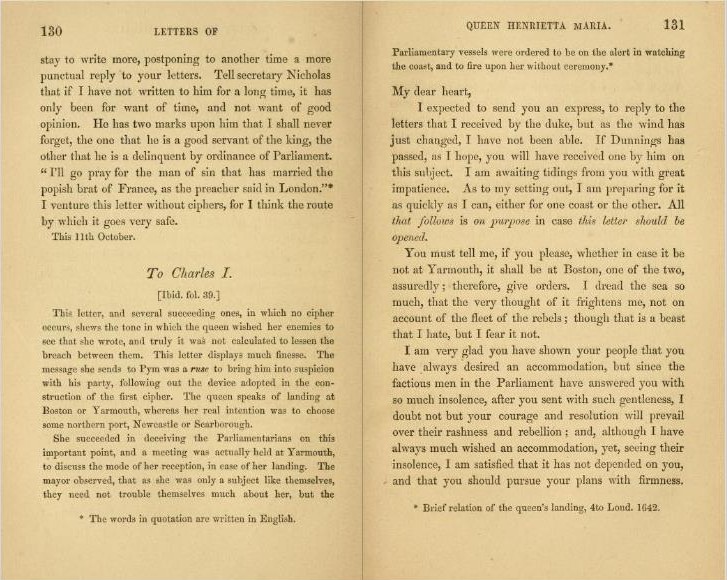
Despite this loss Henrietta travelled south and rendezvoused with Charles at Kineton before traveling to the Royalist capital of Oxford through the Midlands an area continuously contested by both parties.
We cannot doubt the Queens courage, but perhaps her most endearing quality to me is her avid correspondence writing and the true grit she expresses through every sentence. She is no doubt an unsung documenter of one of the most tumultuous times in history.
